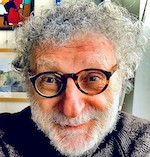
Smart integration requires and favours new business models
We are entering a new world and doing so at accelerated speed to ensure recovery from Covid-19 crisis. It is a critical moment to rethink what physical assets we invest in, the technology and operational rules activating them, the alternative usages of intermediate or final outputs, as well as our individual or collective related behaviours. It means, in other words, rethinking our business models, knowing that those emerging now may differ from those that will appear in 2030.
The old world was based on ‘silos’: everyone taking into account only her own energy needs and costs. The new world will be different: systemic, consciously interactive, integrating all supply chains into a general “system of systems” which must be sustainable and accountable for our global carbon budget. It is why integrating electrons and molecules into a smart response to climate change challenges has the same innovative nature as integrating all industries and sectors into a global EU Renew. Ending silos is a duty for EU Recovery & Green Deal. And a smart digitalisation of the economy and society will be of great help.
All industries and sectors will have to move and adapt, to be ready in 2030 for the final and hard push to “net zero” by 2050: from steel, cement & chemicals, to construction & transportation, agriculture & food industry, or home equipment.
All of them will have to consciously review what assets, technologies and operational rules they use and why. How they influence each other vis-à-vis our general carbon constraint. How reactive, flexible, adaptable they are vis-à-vis much smarter individual or collective behaviour.
Seen from 2030, the smart energy integration world we are entering in today will look like a game with four corners:
1. The manufacturers, who determine what assets can do, exchange and react to;
2. The assets transaction space (Internet of Things, proprietary Operating Systems, etc.), which defines how different sets or classes of assets can dialogue and interoperate;
3.The sellers of final products, who decide what product characteristics to promote and guarantee to final users;
4.The delivery loop operators (handling or not the final settlement process), who are putting these products core characteristics into the hands of final users.
However, seen from 2020, that game still looks more limited as most manufacturers have not yet reached the critical mass production of ‘smart assets‘ (think of the still early development of self-driven cars, smart home appliances, etc.).
The race for EU Green Deal’s new business models has just started, while we are conceiving our EU Covid-19 crisis recovery paths.
Sellers of final products’ characteristics play a key role today as, in the ‘light assets’ world open by digitalization and big tech corporations, there are plenty of ways to redefine products’ characteristics, even for existing ones. We all know “organic milk” and “fair-trade coffee”.
We are eager to learn how “green electricity” could be guaranteed to electric car charging; how much “green or blue hydrogen” might be used by the chemical supplier of our preferred ‘Farm to Fork” local food supplier; and so on. Consumers will pay the price for characteristics that do make sense in a sustainable “knowledge- based” society. Several types of sellers will compete to convince us as buyers and users; be they our peers, in a typical “Peer2Peer” relation, or brand new intermediaries, like aggregators, young start-ups and promising SMEs.
Alternatively, they could be firms already transformed into unicorns, nurtured with rich resource flows from financial markets; or even our old sup– pliers, having created in-house new business units or acquired smaller and innovative companies.
However, sellers of newly defined final products’ characteristics cannot act without intermediary services of the related “assets transaction space”. A space interconnecting producers’ assets with those of the users. That space can be a “platform”.
We already know platforms can be extremely performant and trigger new forms of trade, notably for “peer- 2-peer” exchange. We even know platforms ending into fully closed “ecosystems”. A kind of “private resorts”: fully dominated by the entity running the platform. As Apple Store, Google Play, Alibaba and WeChat actually do.
In the EU, we are promoting an opposite kind of resorts, energy communities, where the transaction space between producers’ and users’ assets is managed by another type of governance having users at its centre.
Other relevant forms of “assets transaction space” are Blockchain networks, or individual prosumers.
Renewal of business models in today’s ‘energy sector integration’ does not end with sellers of new products connected to new transaction spaces.
Electricity, heat, or gases (i.e., natural gas, biomethane, hydrogen, etc.) circulate mainly within dedicated infra- structures, frequently controlled by a regulated monopolist managing how products flow to feed individual users. New products’ sellers as well as new transaction space operators have to coordinate with this mandatory “delivery loop”.
Most of these “delivery loops” are regulated today to deliver “old” products, within a regulatory framework centred on traditional products’ characteristics and a conservative equilibria of cross-subsidies among infrastructure users. It will not be easy for new business models to expand into this deeply regulated world.
Some new projects can be found here or there, as pilots being tried out or operational sandboxes. However, they are only spots for testing, not entries into a fully open new territory. Public policy and regulation can do much more to welcome innovations that new business models may create to reach our 2030 milestones and, later, our final 2050 net zero objective.




